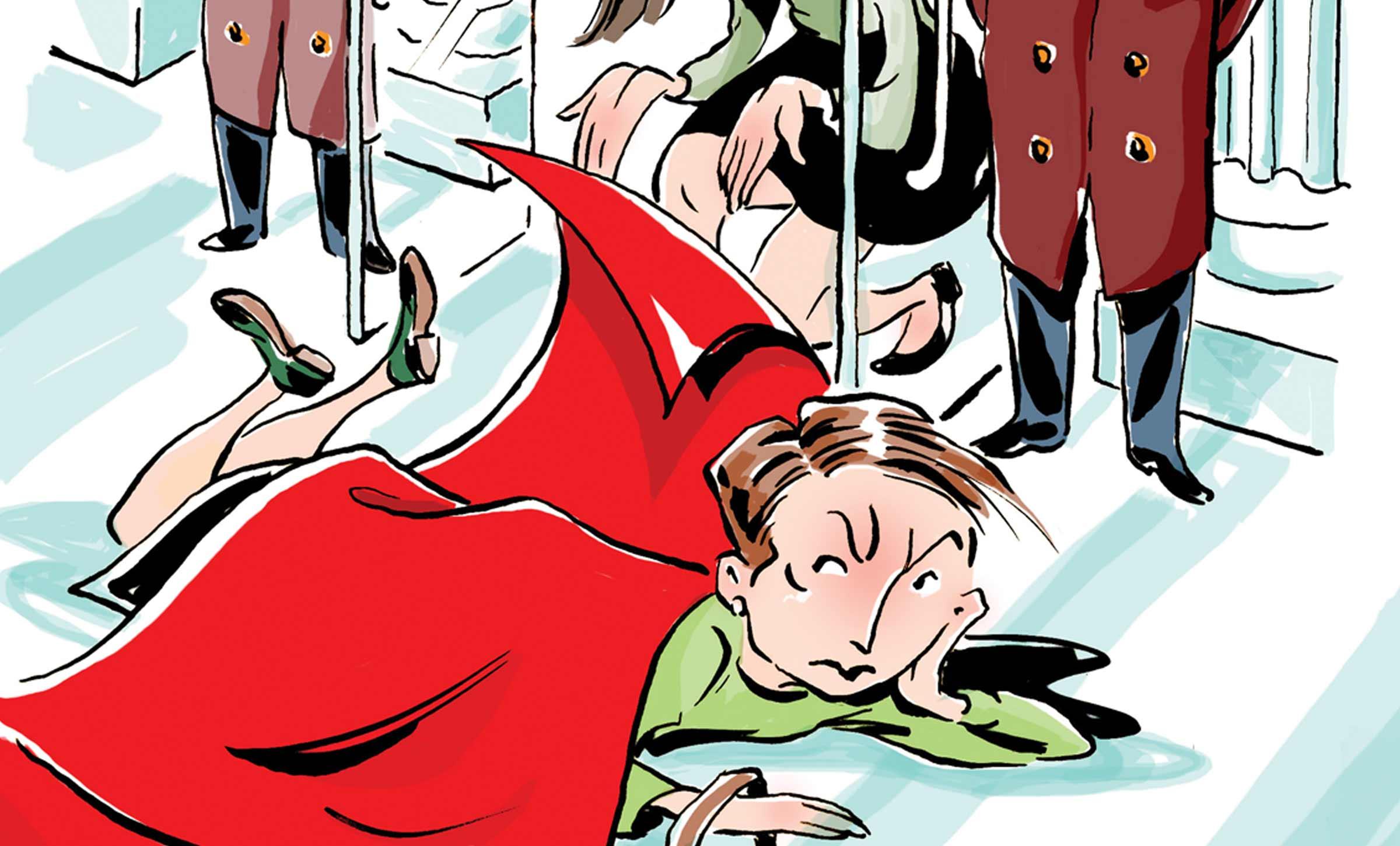金桔
金币
威望
贡献
回帖0
精华
在线时间 小时
|
“高价值的客户像皮球一样被各个部门踢来踢去,他们的问题很难得到解决。”
Why Customer Loyalty Programs Can Backfire

客户忠诚度计划无处不在,仅在美国,各种各样的会员计划就超过了33 亿。会员可以令品牌拥有巨大优势:会员更有可能在自己所属的零售商消费,逛网站或实体店的次数更频繁,更有可能下载品牌的官方应用、在社交媒体上关注品牌或互动,并推荐给家人和朋友。
Customer loyalty programs are ubiquitous, accounting for more than 3.3 billion memberships in the United States alone. And they can confer tremendous advantage: Members are more likely than others to buy from a retailer whose program they belong to, they visit the website or store more frequently, and they are more likely to download the retailer’s app, follow or otherwise engage with the retailer on social media, and recommend it to family and friends.
但是,沃顿大学教授与客户体验咨询公司维德集团(Verde Group)一起进行的新研究揭示了忠诚度计划的一大缺点。当忠诚的会员未能享受到满意的服务——遇到运输问题、退货问题、库存问题等——他们比非会员更沮丧。他们在品牌的消费比非会员频繁,所以也会更经常遇到这样的问题;由于新冠疫情,网上购物激增,服务问题更为普遍,进一步推动忠诚度计划会造成重大损害。研究人员称之为反向效应,品牌煞费苦心培养的忠诚度会反过来损害品牌。
But new research, conducted by professors at the Wharton School along with the customer experience consultancy the Verde Group, reveals an important downside of loyalty programs. When loyal members encounter service failures—shipping issues, problems with returns, stockouts, and the like—they get more upset than customers who are not members of the program. Because they shop the brand more frequently than nonmembers do, they experience such problems more often; and the pandemic-fueled increase in online shopping, where service failures are more prevalent, has compounded the problem to the point where loyalty programs are causing significant damage. The researchers call this the boomerang effect, because the very loyalty a brand engenders comes back to hurt it.
“这对零售商来说是个现实问题,”沃顿贝克零售中心学术主任、该研究报告的作者之一托马斯·罗伯逊(Thomas Robertson)说,“企业正在无意中杀死自己的摇钱树。”
“This is a real problem for retailers,” says Thomas Robertson, the academic director of the Baker Retailing Center at Wharton and one of the study’s authors. “Businesses are inadvertently killing their golden geese.”
研究人员在2020年2月对5000多名美国零售消费者开展了问卷调查,在新冠疫情暴发后的5月又调查了2500名消费者。结果显示,忠诚度计划的会员不仅比其他购物者遭遇更多服务摩擦,而且更难解决问题。例如,5 月份接受忠诚度调查的会员表示,平均需要与公司联系4 次,耗费 5.1天的时间才能解决问题。非会员则只需联系2.8 次,耗时3.3天。
The researchers surveyed more than 5,000 U.S. retail consumers in February 2020 and an additional 2,500 in May, after the pandemic took hold. The results showed that members of loyalty programs not only experienced more service friction than other shoppers but were more likely to struggle to have their issues resolved. For instance, loyalty members surveyed in May required an average of four contacts with the company before reaching a solution, and the process took 5.1 days. Nonmembers needed just 2.8 contacts and 3.3 days.
“高价值的客户像皮球一样被各个部门踢来踢去,他们的问题很难得到解决。”维德集团CEO、该研究报告的作者之一保拉·考特尼(Paula Courtney)说。部分问题在于,要投诉的会员通常会先拨打电话专线,才知道会员专线没有权限。会员对自己应得的服务有着较高期望,因此这种结果尤其具有破坏性。另一个问题是,会员经常想要确认自己的积分或奖励被妥善记录,这通常意味着他们会被推回到会员或营销部门。“这些客户的待遇跟非会员没什么区别,这让他们很恼火。”考特尼说。
研究人员提出了三个缓解反向效应的步骤。

“These highly valuable customers are getting bounced around between different departments and are struggling to get resolution,” says Paula Courtney, CEO of the Verde Group and a coauthor of the study. Part of the problem is that members who have a complaint often begin by calling a dedicated number, only to learn that the loyalty department is not empowered to help them. That’s especially damaging given that members have high expectations for how they should be served. Another issue is that members frequently need to ensure that the points or rewards they have earned are properly accounted for, which often means they are bounced back to the loyalty or marketing department. “These customers aren’t getting anything close to white-glove treatment, and that is frustrating them,” Courtney says.
The researchers suggest three steps to mitigate the boomerang effect.
识别破坏性最大的问题。在审视客户消费过程时,零售商不应只关注最常见的服务问题。“不要让吱吱作响的车轮分散注意力,”罗伯逊说,“最常见的摩擦和问题不一定最紧要。调查显示,10个最常见的服务问题和10个导致忠诚度下降最大的问题之间没有重叠,这是由净推荐值(Net Promoter Scores)计算得出的结论。受访者在2月和5月最常提到的三个问题都与商品的供应量有关。而在疫情暴发前的调查中,破坏性最大的三个问题则与查找和购买商品的效率有关。在疫情期间,破坏性最大的问题是退货必须支付运费、有原始收据才能退货,以及在浏览网站时遇到问题。
Understand which problems are the most damaging.
As they audit the customer journey, retailers should avoid the temptation to blindly focus on the most frequent service failures. “Don’t get distracted by the squeaky wheel,” Robertson says. “Your most common sources of friction aren’t necessarily the ones that need immediate attention.” Indeed, the surveys revealed no overlap between the 10 most frequent service failures and the 10 that caused the biggest erosion in loyalty, as measured by Net Promoter Scores. The three problems most often cited by respondents in both February and May related to items’ availability. The three most destructive in the pre-pandemic survey had to do with finding and purchasing items efficiently. During the pandemic, the most destructive issues were having to pay for return shipping, needing an original receipt to make a return, and experiencing problems navigating the website.
罗伯逊解释说,忠诚度计划的隐藏含义是:品牌对会员是重要的,会员对品牌也是重要的。缺货这样的问题虽然很恼人,但并不特别具有破坏性,因为并没有违背忠诚度计划的本意。但要求会员退货时支付运费并提供原始收据,表明品牌并不知道他们的身份,也不信任他们,更不在意能不能让他们购物更方便。
Implicit in a loyalty program’s contract, Robertson explains, is an understanding that just as the brand is special to members, members are special to the brand. While failures such as stockouts are annoying, they aren’t particularly destructive because they don’t violate that contract. But asking members to pay for return shipping and provide an original receipt signals that the company doesn’t know who they are, doesn’t trust them, and doesn’t care about making it easy for them to do business.
提供防止“脱粉”的福利。在疫情暴发前和期间,面对服务问题时,部分会员特权有助于减轻不满情绪:及时获取限时供应或独家活动邀请等内幕信息,免费寄送与退货,购买返现,心仪商品的发售提醒,查看购物记录权限,以及Alexa或谷歌助理通知订单和发货状态。研究人员说,这些福利往往会让会员感到自己得到了重视,缓解购物时的挫折感,如同常旅客福利可以缓解与旅行有关的小摩擦一样。考特尼说:“你在贵宾休息室里品着香槟时,可能就不太在意行李延误。”相比之下,当问题出现时,会员价和赠品等福利对提高会员忠诚度的作用微乎其微。
Deliver on the benefits that can protect against defections.
Several loyalty program perks tempered dissatisfaction in the face of service failures both before and during the pandemic: insider access to information such as limited-time offers or invitations to exclusive events, free shipping and returns, cash back for purchases, alerts when desired items went on sale, access to one’s shopping history, and Alexa or Google Assistant notifications about order and shipping status. Those benefits tend to make loyalty members feel valued, the researchers say, and they can temper shopping frustrations much as frequent-flier perks can assuage travel-related glitches. “You’re less likely to mind having your baggage delayed if you’re sipping champagne in the arrivals lounge,” Courtney says. Benefits such as special member pricing and gifts, by contrast, did little to shore up loyalty when problems arose.
将忠诚计划与整体战略和流程相结合。与其只在市场营销部门实施忠诚度计划,品牌更应该将其与运营、技术和财务部门整合,实现快速通畅的售后理赔。例如,如果忠诚度计划没有利用销售终端技术来识别回头客,就无法实现流畅的退货体验。其他破坏性的服务问题,比如电话客服态度粗鲁,如果会员部门没有能力在企业运营层面推动改变,就无法补救——比如客服态度不好,应对措施可以是让企业重新评估人员配备和调整培训重点。
Integrate loyalty programs with overall strategy and processes.
Rather than silo loyalty programs within marketing departments, retailers should integrate them into operations, technology, and finance to facilitate swift, streamlined service recoveries. Seamless returns, for example, aren’t possible if a loyalty program doesn’t utilize point-of-sale technology that recognizes repeat customers. Other damaging service failures, such as rudeness from reps answering the phones, can’t be remedied if the loyalty department is powerless to drive operational changes—in the case of rude reps, by pushing for a reappraisal of staffing and training priorities, for example.
疫情消退后,网上购物的热潮很可能会持续下去,虽然一些相关的服务问题应该会随着公司调整得到解决,但公司仍需要关注和管理忠诚度计划的负面影响。罗伯逊表示:“没有零售商承受得起失去最有价值的顾客的后果。反向效应敦促品牌要加紧解决会加剧会员流失的问题,并投资可以减轻损失的会员福利。”
The boom in online shopping is likely to continue after the pandemic abates, and while some of the associated service problems should smooth out as once-deluged companies adjust, firms will still need to monitor and manage any backlash from their loyalty programs. “No retailer can afford to lose its most valuable customers,” Robertson says. “The boomerang effect shows the urgency of tackling problems that specifically aggravate loyalty members and investing in benefits that can mitigate the damage.”
关于本研究 《新现实:理解零售消费者在疫情期间的体验》(The New Reality: Understanding the Retail Consumer Experience Duringa Pandemic),托马斯·罗伯逊、保拉·考特尼(研究报告)。 |
|
 /3
/3 